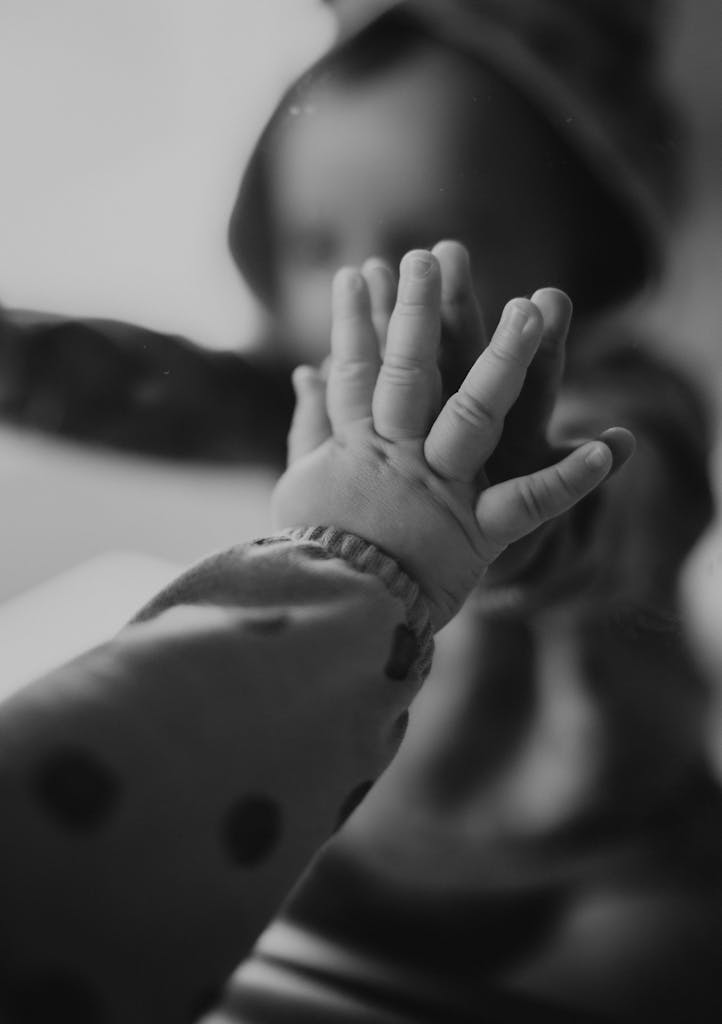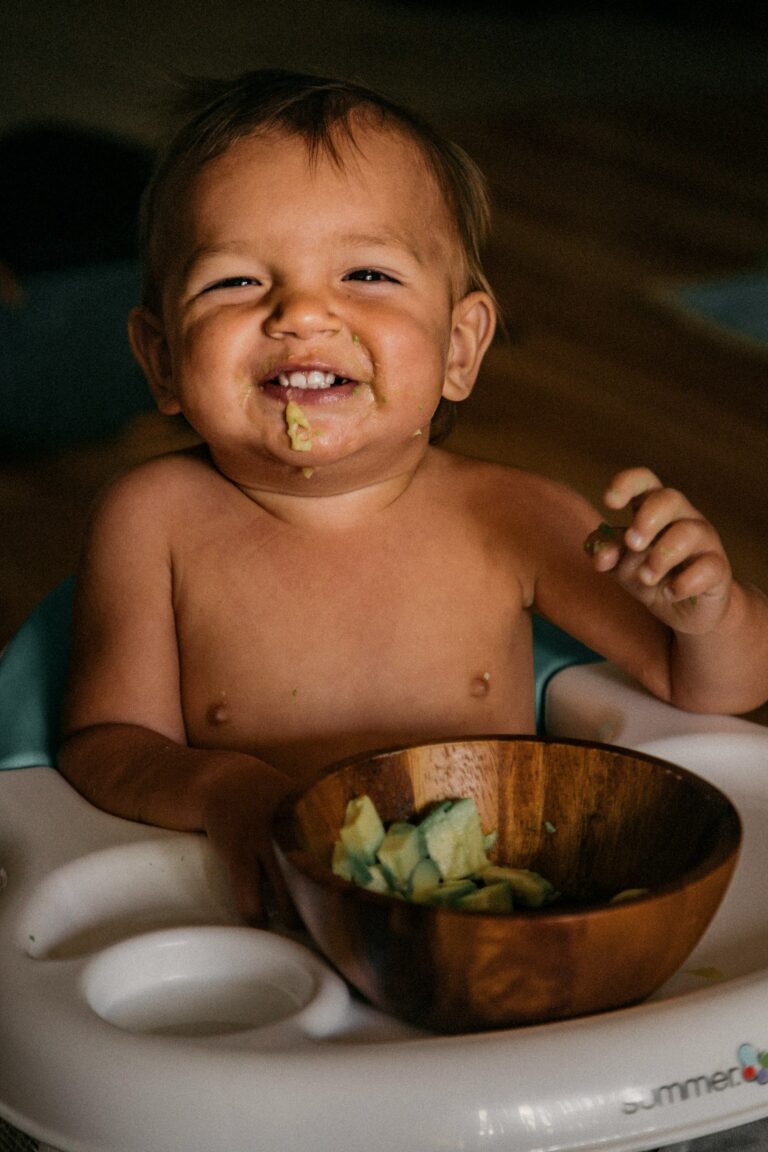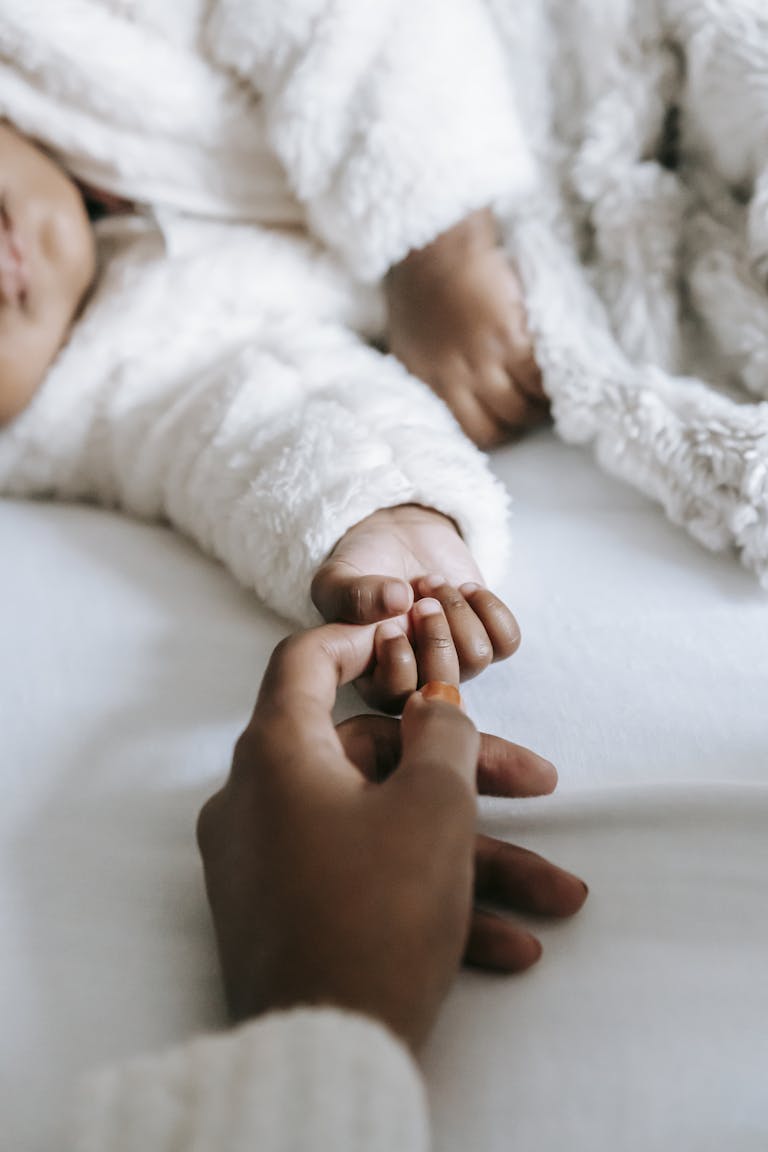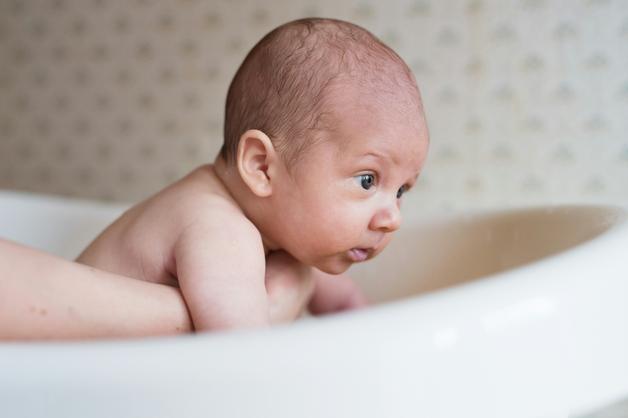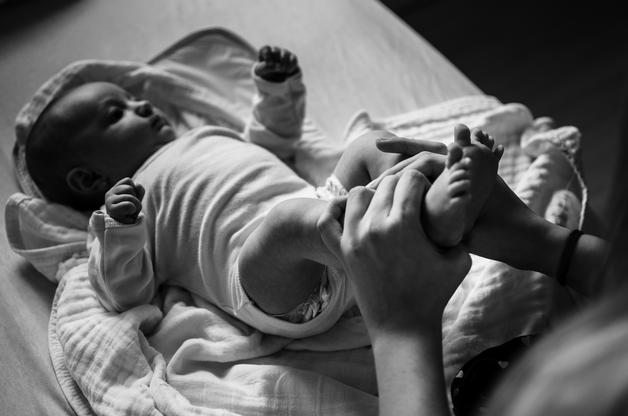Watching your baby respond to their own reflection—perhaps with wonder, a hesitant smile, or delighted babble—can spark a sense of both amazement and curiosity. Many parents wonder what’s happening behind those bright eyes peering into a mirror, and might even feel a flutter of concern if their little one seems slow to engage. Is this a whimsical game or something rooted in deeper, essential pathways of brain growth? The mirror stage baby marks a fascinating intersection between cognitive milestones, emotional attunement, and the shaping of social bonds. You may ask yourself: Is my baby on track? What if they seem indifferent to their reflection? Why does mirror play matter, and is it only about vanity? Here’s a journey into the science and the lived realities of parenthood—where developmental psychology and daily routines intertwine, and the seemingly simple act of mirror-gazing becomes a springboard for empathy, communication, and self-discovery.
What Is the Mirror Stage Baby? Unpacking a Foundational Developmental Milestone
Key Definitions, Concepts, and Neuroscientific Insights
The mirror stage baby is a classic image in child development literature, and for good reason. The term, rooted in psychoanalytic theory—most notably in Jacques Lacan’s work—captures the remarkable moment between approximately 6 and 18 months when a child first recognizes themselves in a mirror. Now, this isn’t just about visual fascination. It’s a multilayered event that signals self-recognition, ego development, and a leap toward social awareness.
At first, infants experience their bodies as a mosaic of sensations—flailing hands, wiggling toes, a cascade of noises and touch. The mirror image brings those sensations together into a unified ‘I’. This visual feedback activates networks involving mirror neurons, specialized brain cells that enable your child not only to imitate gestures but also to attune emotionally to faces, intonation, and moods. Fascinatingly, these neurons are active even before actual mirror recognition occurs, scaffolding the processes of social imitation, empathy, and learning.
You might notice your baby’s delight at making eye contact or mimicking your smile. That’s the mirror effect in action, long before they reach for their nose in the glass.
Lacan, Psychology, and Parental Perspectives
Why do babies seem so captivated by their own reflection? Lacan’s theory argues that the child’s mirrored image—the “Ideal-I”—is both exciting and elusive. It’s an ideal—seemingly whole and capable—while their own motor skills and internal sense of self are still coming together. Developmental psychology, meanwhile, focuses on observation: Does your mirror stage baby smile at themselves? Babble to the glass? Later, will they try to wipe away that streak of applesauce on their cheek they see in the reflection?
Both perspectives converge on one insight: Positive mirror play—and even more so, attuned, responsive interaction with caregivers—nurtures confidence, emotional security, and early empathy. Babies internalize not just what they see, but what is reflected back through tone of voice, reassuring touch, and facial expressions. Calm responses during distress (say, after a cough or a startling noise) become templates for emotional regulation.
When Does the Mirror Stage Baby Emerge? Milestones, Signs, and Individual Variation
Age Ranges and Behavioral Landmarks
The general range for self-recognition is between 6 and 18 months, but initial mirror curiosity may show up even earlier. Here are markers parents often witness:
- At around 6 months, a mirror stage baby may fixate on their reflection, smile, vocalize, or reach out.
- Between 15 and 18 months, many children can identify themselves by touching or pointing to a body part (their nose, cheek) after being prompted.
- The “mirror test”—placing a dab of lipstick or a sticker on the child’s forehead—typically elicits attempts to touch or remove it from their own face once recognition kicks in.
However, the mirror effect—copying a caregiver’s expressions or actions—emerges even before this visual milestone. Whether imitating a yawn or echoing a gentle “shh,” this substrate for emotional and social learning is foundational.
Stages of Recognition and the Importance of Imitation
The progression generally unfolds as:
- Looking and Smiling: Visual interest in the mirror, spontaneous grins.
- Interactive Play: Vocalizing at the reflection, waving or reaching.
- Testing Identity: Attempting to wipe a mark from their face, indicating awareness that “this is me.”
- Social Imitation: Mirroring your claps, laughs, or soothing gestures, both with and without a literal mirror.
While self-recognition plants the roots of identity, social imitation is the glue that fosters relational understanding, empathy, and other aspects of social cognition. These skills are parallel, related, but distinct.
The Science: Mirror Play, Brain Growth, and Social-Emotional Health
How Does Mirror Play Boost Cognitive and Emotional Development?
Watching a mirror stage baby study their reflection is witnessing early cognitive development at work. The baby begins to understand cause and effect—when they move, so does the image. This feedback loop enhances attention, curiosity, and emotional security. In moments of discomfort—perhaps a startled reaction to a cough or brief distress—what the caregiver mirrors back (calmness, reassurance) is just as important for emotional wiring.
Sensitive, responsive parenting (explaining, soothing, narrating) during these moments doesn’t just help babies feel safe; it literally builds neural pathways for emotional regulation, observable in later resilience.
Empathy, Social Skills, and Language: The Mirror’s Ripple Effect
Here’s where the reach of the mirror stage baby sails beyond mere self-awareness. As self-recognition solidifies, children begin to distinguish between “me” and “not me,” setting the stage for empathy—the awareness that other people have their own feelings and needs.
Mirror play is intertwined with early language development: naming body parts, describing facial expressions, and sharing sounds engage a baby’s growing ability to understand and use language. Meanwhile, attuned parental speech—warm, expressive, full of gestures—helps babies anchor words to feelings, events, and social exchanges.
The Mirror Test: Practical Tips for Parents
Curious whether your mirror stage baby truly recognizes themselves? The mirror test is elegantly simple: discreetly place a bit of color on their cheek and watch—do they reach for their own face or the glass? Earlier signs, such as babbling or grinning at a reflection, are stepping stones toward this big leap.
Identity Formation and the Mirror Stage Baby
From Fragmentation to Wholeness: Neurodevelopment Unveiled
Before the discovery of self in the mirror, infants experience their bodies in fragments. Hands grasp, feet kick, but the connection isn’t always clear. The mirror cements a gestalt, or unified sense of self—no small feat for neural wiring. Ego formation follows: the baby internalizes an “ideal” image that may feel just beyond reach, catalyzing ambition, but sometimes also frustration.
This phase is far from just a cognitive puzzle; it’s a launching pad for secure self-esteem and later psychological well-being. A solid sense of self, validated through both mirror play and warm interpersonal feedback, can buffer against anxiety and social stress down the road.
The Imaginary, the Symbolic, and Cultural Nuances
Lacan described three orders in child development: the Real, the Imaginary, and the Symbolic. The mirror stage baby moves from raw, undifferentiated experience (the Real), to the shape-filled world of images and identifications (the Imaginary), and eventually into the structured domain of words, social roles, and meaning (the Symbolic). Each transition is fueled by both biology and nurturing interaction.
Yet, culture guides the journey. Some families use mirrors freely; others emphasize face-to-face rituals or storytelling. What matters most? The quality of connection—consistent, positive feedback, whether mirrored literally or through daily interactions and shared routines.
Supporting the Mirror Stage Baby: Activities and Parental Guidance
Mirror Games and Age-Appropriate Play
- For infants (birth–8 months): Place a baby-safe mirror for tummy time. Narrate (“Look, that’s your nose!”), mimic their sounds, reflect their mood using your own expressions.
- From 6–18 months: Play peek-a-boo with a mirror, invite imitation of expressions, and prompt “Where’s your cheek?” to support both body and word learning.
- Toddlers (15–36 months): Encourage “follow the leader” games with facial expressions, ask them to point to or name body parts, or read picture books about emotions—then act out faces in the mirror together.
Games like these do far more than pass the time. They lay the foundation for joint attention, empathy, and communication. Repetition helps build the internal map babies need to recognize and regulate their feelings, as well as associate vocabulary with lived experiences.
Noticing Signs, Celebrating Variation, and When to Seek Support
Is your mirror stage baby fascinated by their reflection one week, indifferent the next? That’s entirely normal—interest peaks and dips with mood, development, and personality. Some children are more drawn to social imitation or tactile exploration.
Pay attention: consistent lack of interest in mirrors, little response to emotional cues, or persistent absence of imitation may warrant discussion with a healthcare professional, especially if accompanied by delays in other milestones. Most of the time, variability is part of the rich tapestry of neurodevelopment, not a red flag.
Special Considerations: Premature and Differently-Abled Babies
Premature infants or those with sensory differences (such as vision impairment) may experience the mirror stage baby milestone later, or engage through other senses: touch, sound, or even reciprocal social play. For babies with neurodevelopmental conditions, responsive parenting—acting as a “metaphorical mirror” through words, touch, and attentive presence—becomes even more vital for fostering self-awareness and trust.
Broader Perspectives: Mirror Recognition Across Cultures and Species
Insights from Psychology, Ethology, and Cross-Cultural Practices
The roots of mirror recognition stretch back to scholars like Henri Wallon and Freud, while studies in developmental psychology have refined our understanding through empirical tests. Different cultures foster self-awareness in children through varied means—some prioritize direct mirror play, others emphasize ritual, narrative, or physical interaction.
Even animals—certain primates, dolphins, elephants—can pass elements of the mirror test, but the human experience is uniquely layered, entwined with language, extended caregiver dependency, and intricate social cues.
Why the Mirror Stage Baby Matters: Long-Term Resonance
Lasting Impacts on Empathy, Self-Esteem, and Relationships
Self-recognition isn’t just a fleeting party trick. It lays the groundwork for theory of mind—the recognition that others have their own feelings and intentions. This is the soil from which empathy, cooperation, and effective communication spring.
Children whose mirror stage baby journey is supported—through loving, attentive interaction—often display greater emotional balance. Simple routines, like reassuring a coughing baby with calm words, do not merely soothe the moment; they reinforce patterns of emotional resilience carried into adulthood.
Psychologically, the dance between “real” and “ideal” images, so eloquently described by Lacan, endures through life—shaping self-worth, motivation, and the tenor of adult relationships. Secure self-esteem and the ability to reflect—literally and metaphorically—are gifts from these earliest interactions.
Key Takeaways
- The mirror stage baby marks a unique leap in self-awareness, emotional development, and the ability to distinguish self from others, usually between 6 and 18 months.
- Early, responsive caregiving—whether through literal mirror games or daily rituals of imitation and emotional attunement—fuels brain growth, emotional resilience, and early language skills.
- Variability in mirror interest is normal, but persistent absence of self-aware behaviors, delays in emotional or social imitation, or regression may suggest a discussion with a pediatrician is helpful.
- Mirror play isn’t just for fun: it supports empathy, theory of mind, and forms the rootstock of future social and emotional skills.
- Every family’s journey and every mirror stage baby unfolds at its own pace, shaped by cultural practices, individual temperament, and the kinds of responsive, positive interaction that research highlights again and again as the most powerful drivers of child development.
- There are resources and professionals ready to support you every step of the way, whatever challenges or questions arise on this adventure. For personalized guidance and free health questionnaires for children, discover the Heloa app.
Let the mirror stage baby—sudden grin or tentative hand to the glass—be a reminder: in those reflections, both literal and figurative, children discover not just who they are, but who they might become.
Questions Parents Ask
What if my baby shows no interest in the mirror?
It’s entirely normal for babies to have varying levels of interest in their reflection. Some children might be more focused on sounds, people, or toys around them. If your baby doesn’t seem fascinated by the mirror, there’s no need for immediate worry—every child explores their environment in their own way and at their own pace. Encourage gentle exploration by joining in with them, talking about what they see, or making playful faces together. If you notice a consistent lack of interest in social interaction or communication alongside this, you may wish to mention it to your pediatrician for extra reassurance.
Can mirror play help if my baby is shy or reserved?
Mirror play can be a wonderful, gentle way to encourage engagement for babies who are naturally more reserved. Watching their own expressions and movements, often with a parent by their side, gives a safe space to explore feelings and reactions. Simple activities, like imitating your baby’s gestures or mirroring their smiles, can boost confidence and nurture connections over time. Keep the atmosphere light and pressure-free—every moment of shared attention helps build trust and curiosity.
Is the mirror stage important for a baby’s language development?
Yes, the mirror stage can offer valuable support for early language learning. Naming body parts, describing what’s happening in the reflection, or simply narrating playful exchanges helps babies connect words with their own experiences. These moments create the building blocks for understanding language and making sense of social cues. Try to talk, sing, or play peekaboo in front of the mirror—these small daily routines make a big difference in a baby’s comfort with words and gestures.
